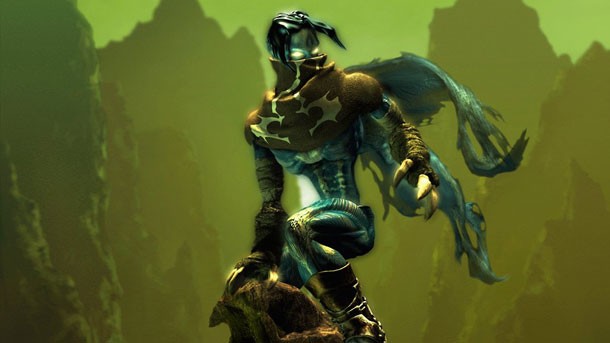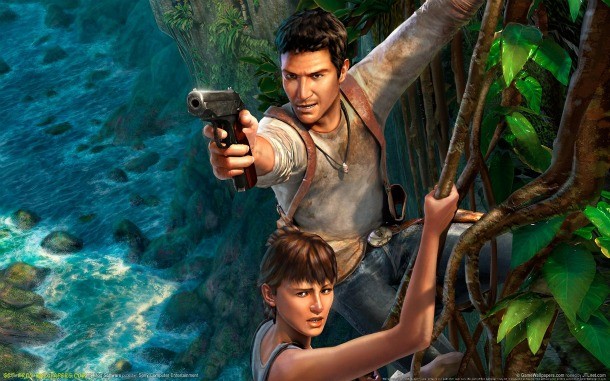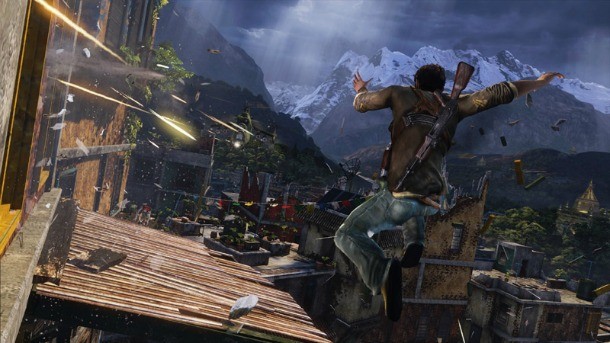We're Back. We hope you'll join us. Learn more
A Look Back At Amy Hennig's Career So Far

Today the news broke that Naughty Dog's acclaimed writer and creative director Amy Hennig has left the company. While we don't know what her next project will be, it seems like an appropriate time to look back at the accomplishments of one of gaming's most respected developers.
Hennig got her big break in the game industry as an artist on a little-remembered EA game called Michael Jordan: Chaos in the Windy City, a 1994 platformer designed to capitalize on the enormous popularity of the Chicago Bulls superstar. From these inauspicious beginnings grew a career that would include some of the best-loved games of the past two decades.
After leaving Electronic Arts, she landed at the upstart studio Crystal Dynamics, where she began work in innovative storytelling and game design that would come to define her career. I interviewed her in 2013, and she recalled the early days at Crystal Dynamics:
"I think we could all see all the potential, so there was a lot of energy and enthusiasm around where the console market was heading," she said. "It seemed kind of new, you know? Management really did encourage us to work things out. There wasn't a lot of producers or overhead or anything like that. It was just everybody was knuckling down, working on the projects. There was a lot of things going on, too, because we had external developers [and] internal developers. I think that creates a certain level of energetic excitement, too. That's a huge variety of things all happening at once, as opposed to this one monolithic project that everybody's on - that sort of creates its own energy."
One of Hennig's early accomplishments at the company was working with Silicon Knights, which was creating Blood Omen: Legacy of Kain, which would be published by Crystal Dynamics. Behind the scenes, she worked to help polish the game, and many people involved credit her with turning the project into a success.
As a result, when Crystal decided to develop the next Legacy of Kain game internally, she was given the lead role on the project. However, Legacy of Kain: Soul Reaver actually started as another, unrelated project.

"A few of us came up with [a project] that was codenamed Shifter, which would have been an awful name," Hennig said. "It was not even associated, initially, with the Legacy of Kane franchise. It was just a concept. We had this character...a strange, post-apocalyptic archangel; he's a fallen angel and he's trying to revert. It was very similar to Soul Reaver, but it was based on this idea that we were going to have this open world with streaming all of the level data constantly off the disc, and do the morphing between the material and the spectral worlds. We were sort of naive that we thought that was going to be easy. I remember when we pitched it, everybody loved the idea, but they were like, 'Oh my god, you're crazy. How on earth are you going to do that?' But we did. I'll confess that I think the streaming wasn't working until about two months before we shipped."
Based on the success of Soul Reaver, the Kain franchise became a staple franchise for Crystal Dynamics and Eidos (which acquired Crystal Dynamics in 1998), spawning three sequels. After completing the last, Legacy of Kain: Defiance, Hennig reunited with former Crystal Dynamics employees Evan Wells and Bruce Straley at Naughty Dog. Armed with Naughty Dog's world-renowned engine technology, Hennig would create a new franchise and set new standards in video game storytelling.
When Hennig arrived at Naughty Dog, she went to work on the then-in-development Jak 3, which would be the final of the studio's PlayStation 2 platforming trilogy. Her next project would redefine Naughty Dog as a company, and set the bar for PlayStation 3-era action games.

Uncharted: Drake's Fortune released in 2007 and was among the early highlights of the PlayStation 3 catalog. The game introduced gamers to adventurer Nathan Drake, a descendant of Sir Francis Drake and a professional treasure hunter. In many ways, the game was a modern-day update of the Indiana Jones films, and mimicked that series' wry humor, globetrotting adventuring, and huge action set pieces. It was widely acclaimed and helped establish Naughty Dog as a studio that could make games aimed at an older audience than its previous franchises Crash Bandicoot and Jak and Daxter.
Hennig, as the main writer, won acclaim for the game's infectious, natural dialogue and charming characters like Drake's mentor Sully. However, she also had a major hand in the design of the game as well. Her expertise in all areas of game design led her toward an approach to game writing that put gameplay first. This philosophy played heavily into her approach to creating the much-anticipated Uncharted sequel.
"From a creative standpoint, especially for an action-adventure cinema narrative, a lot of times you start from this idea of, 'What are our big set pieces, what are some of the things that we really want to hang our hat on?'" observed Hennig. "When I say set pieces, it could be all kinds of things. It could be a vehicle sequence; it could be like our capsizing cruise ship or the train in Uncharted 2. It's not unusual as a writer to say, 'This would be awesome, right?' Actually if you go back and look at the Raiders of the Lost Ark story transcripts you'll see Lucas and Spielberg doing the same thing. It's kind of how you operate. For instance, the train level was the very first one we started and the last one we finished in Uncharted 2."

Uncharted 2: Among Thieves, released in 2009, improved upon the original in every way, fixing the few gameplay and design flaws and delivering a more epic story. From the opening scene, which featured Drake hanging over a cliff from the wreckage of a train to a stunning sequence that had him on the run from a helicopter, the game was a big-budget Hollywood action film come to life. It also featured some real depth in the writing, particularly the relationship between Nathan Drake and plucky love interest Elena Fisher. It would earn a perfect 10 from Game Informer and other video game outlets.
Like Jak and Daxter, the Uncharted series would close out the PlayStation 3 era as a trilogy (not counting the PlayStation Vita title, Uncharted: Golden Abyss which Hennig did not write). Uncharted 3: Drake's Deception was another fantastic title, and featured a story that lent some emotion to the relationship between Nathan Drake and his sometimes-untrustworthy father figure Victor "Sully" Sullivan. Along the way, gamers got a glimpse into Drake's past - as well as another serving of incredible moments such as platforming out of a sinking ocean liner.
As a trilogy, Uncharted was Naughty Dog's masterwork, in large part due to Hennig's writing and vision. Again, her holistic approach to game design and writing seemed to pay off.
Hennig said, "When people play the Uncharted games they just get caught up. They don't want to put the controller down. Some of that has to do with working on the pacing and making sure that there aren't dead points or frustration points, but a lot of it has to do with wanting to see what happens next because you care about the characters. So I think it's that, it's looking at how story and gameplay can be integrated as a singular goal. So that we're not just saying, 'Here's our story breakdown, then here's our levels.' It's not something that can be broken apart and reorganized in any order. What's happening in the game is happening because it's being driven by the story, and what's happening in the story is being driven by the gameplay at the same time."
After Uncharted 3, Hennig stepped back to begin work on the PlayStation 4 reboot of the series. In the meantime, Naughty Dog once again won acclaim with The Last of Us, a game helmed by Bruce Straley and Neil Druckmann. Now, as we've learned, Hennig has left Naughty Dog - and there are reports that the parting was not amicable. What this means for the future of Uncharted, which will likely be revealed at E3 this year, and Naughty Dog as a studio remains to be seen. We do know with certainty is that the studio has lost one of the most talented people in the game industry. We can't wait to see what she does next.










